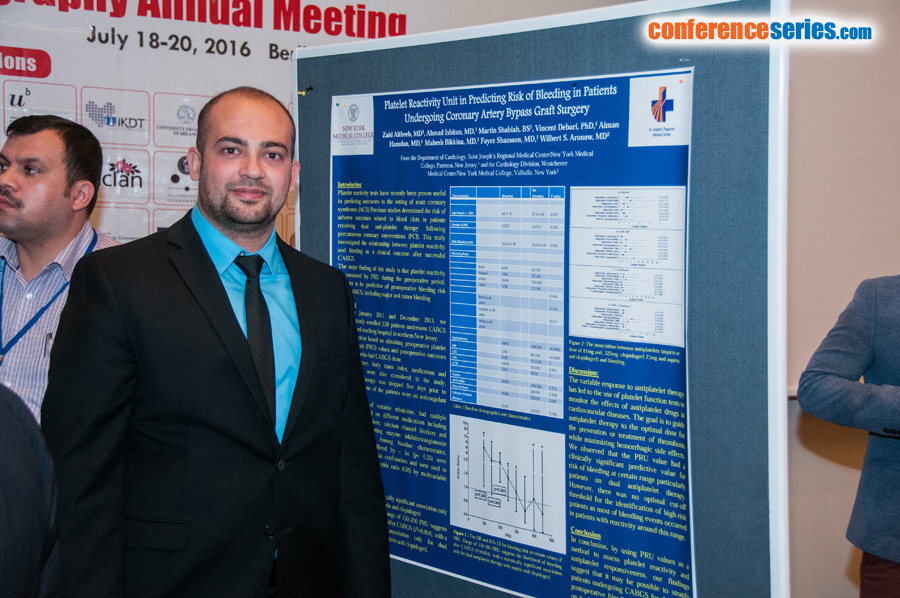
Zaid Altheeb
New York Medical College, USA
Title: Value of neutrophil to lymphocyte ratio as a predictor of mortality in patients with heart failure with preserved ejection fraction
Biography
Biography: Zaid Altheeb
Abstract
Background: Inflammation plays an important role in left ventricular remodeling and myocytes hypertrophy and remodeling. Higher levels of inflammatory markers, like IL-6, TNF-a, and CRP, were found in patients with heart failure with preserved ejection fraction (HFpEF). Neutrophil to lymphocyte ratio (NLR) represents a widely available, non-specific marker of systemic inflammation. It was validated as a significant predictor of adverse outcomes in multiple cardiovascular diseases, such as acute coronary syndrome and valvular heart disease. In this study we aimed to explore the utility of NLR as a predictor of long-term mortality in patients with HFpEF. Methods: 376 patients admitted to our hospital between 2010 and 2012 for acute HFpEF exacerbations were evaluated for study inclusion. 296 patients met the study inclusion criteria. Depending on the initial NLR level, patients were divided into two groups; NLR >= 4.5 and NLR < 4. Three-year vital status was obtained via electronic medical records and Social Security Death Index. Survival analysis was used to evaluate the predictive value of NLR level between these two groups. Results: There was a higher all-cause 3-year mortality (6.8% vs 15.3%, Chi-squared 4.6, p 0.033) in patients with NLR >= 4.5 when compared to those with NLR =4.5 (84.7% vs 93.2%, Chi-squared 5.423, P 0.02, HR 2.3456, CI 1.19-4.64). Using univariate Cox proportional-hazards regression analysis, patients with NLR >=4.5 had 2.35 fold increase in 3-year mortality when compared to those with NLR < 4.5 (HR 2.35, CI 1.12-4.79, P 0.0244). In a multivariate cox regression analysis, with the adjustment for age, sex, race, history of coronary artery disease, stroke, hypertension, diabetes, end-stage renal disease and tobacco use, NLR remained a significant independent predictor of 3-year mortality and patients had a 2.53 fold increased risk of mortality (HR 2.53, CI 1.14-5.62, P 0.0229). Conclusions: NLR, using a cutoff value of 4.5, represents an independent predictor of long-term mortality in patients with HFpEF.



